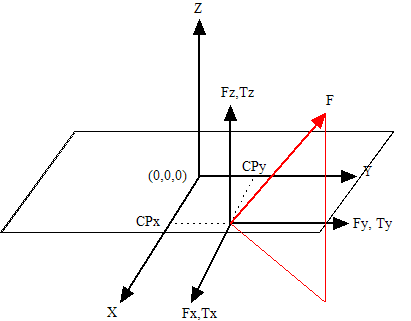This is an old revision of the document!
Table of Contents
Force Representation
Inverse dynamics analysis requires 9 variables to define the reaction force completely:
- 3 components of the Force Vector (Fx, Fy, Fz);
- 3 components of the Centre of Pressure (CPx, CPy, CPz); and
- 3 Free Moments (Tx, Ty, Tz)).
Force Platforms
Most force platforms measure only 6 signals of the 9 required. This is not a limitation in gait laboratories because for studies of walking it is possible to make valid assumptions about 3 of the signals, thus providing all of the signals necessary for an Inverse Dynamics analysis of walking on the force platform. These simplifying assumptions are that:
- the z-component of the Centre of Pressure is the top surface of the force platform; and
- the x- and y- Free Moments are both equal to 0.
Note: The assumption that the two free moments are equal to zero are not valid for handles instrumented with 6 degree of freedom load cells, wheel chair rims, or any circumstance in which the person can wrench the force platform, or pull up on it.
Visual3D
Visual3D represents stores the nine variables in the FORCE, COFP, and FREEMOMENT data types within the data tree.
These Force Platform Signals are computed from the ANALOG signals and the FORCE_PLATFORM parameters in the C3D file. These signals can be modified by changing the C3D Force Platform parameters, or by processing the ANALOG signals.

